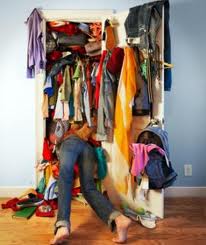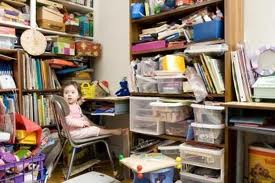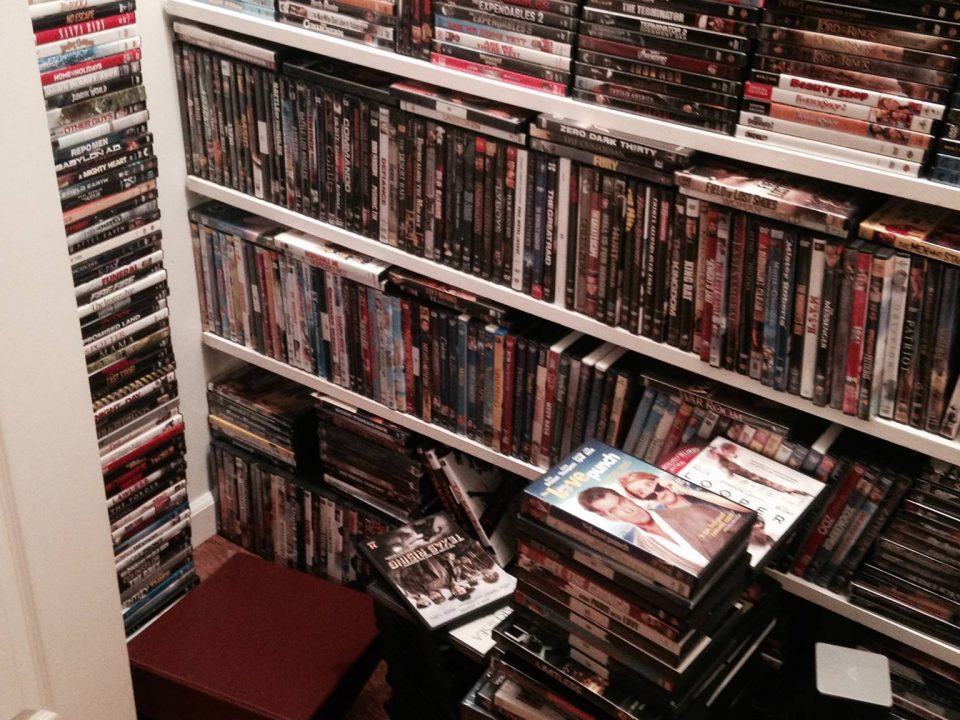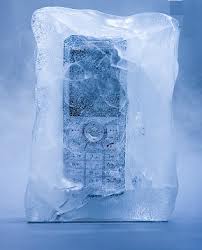
Cleaning Your House Like A Professional – Bedroom
June 12, 2013
Marinating Your Marriage
June 17, 2013 Clutter happens!
Clutter happens!
Cutting Clutter 101
Definition of clutter: A number of things scattered in disorder, jumbled.
As I have said in other post, we all have the potential to collect clutter. Whether it is your whole house or just your kitchen table, there is a way to rid yourself of the clutter and reclaim your space.
Cutting the clutter in your life starts by understanding that everything you have needs to have a place in your home and these things need to be put back in their place when you are finished using them. If you have far too much clutter to have a place for everything, then it needs to be purged.
Purging is difficult, especially if we have emotional attachments to our possessions. Some of the attachments are; we will use it some day, I got a great deal on this, It is worth money, I will get back into that size, and the list goes on and on. Over time these things become clutter. The amount of purging you do depends on the amount of space you actually have to be able to put everything in it’s place.
To get started with your clutter, you need 3 large containers mark them “KEEP,” “THROW AWAY,” “DONATE or SELL.” See ORGANIZING BASICS to learn the basics of getting rid of clutter.
Pick one small area of clutter and go through it, utilizing your containers. Ask yourself, “Have I used this in the last 6 months?” If not it needs to be purged. When your “KEEP” container gets full, stop and find a place for everything that is in it and so on with the other containers. Continue on until the small area is clutter free. Dust and vacuum frequently during this process.
Once you have a completed an area you will be motivated to pick another. If you follow this process, you will be clutter free in no time. See and at the top of this page you will see a tab for “Home Organization Topics” to search for specific organizing topics.
It actually takes more work and energy to live with clutter, than it does to organize your space and keep it that way.
 There are many levels of clutter. Some are extreme and hazardous. In this picture you can plainly see that this is not a safe place for this child. There have been some obvious attempts at organizing this space however the fundamentals of organization have not been used.
There are many levels of clutter. Some are extreme and hazardous. In this picture you can plainly see that this is not a safe place for this child. There have been some obvious attempts at organizing this space however the fundamentals of organization have not been used.
The more clutter you have, the more dust you have. Therefore clutter is actually a health hazard to you and your family.
Clutter it is not just a physical hazard. Clutter affects your mental state of mind as well. Clutter can contribute to depression, isolation and can actually affect your child’s development.
Hazards of extreme clutter
There are safety hazards, such as tripping over piles, or the danger of fire with stacks of papers and magazines all over the house. People who live in houses with excessive clutter are at risk of more health problems because of the dust, mildew and fungus that can be caused by the disorder.
GET RID OF THAT (TOXIC) DUST by: http://www.ewg.org
Dust bunnies aren’t just unsightly and sometimes allergenic; they contain toxic chemicals. Why? The many chemicals in and around your homes wind up in your indoor dust when they migrate from home products and come in through open doors and windows and on your shoes. But the good news is it’s pretty easy to keep those dust bunnies at bay — and reduce your family’s toxic exposures, too. Read on to learn:
- Why your household dust is toxic
- How toxic dust can affect your family
- Tips to remove dust safely and effectively
- How to create less toxic dust in the first place
WHY YOUR HOUSEHOLD DUST IS TOXIC
Every home has a little dust — and its own unique “dust load,” based on a variety of factors like where you live, what you cook, if you smoke, the climate, and how many people — and animals — live there. Ordinary house dust is a complex mixture of generally yucky stuff — pet dander, fungal spores, tiny particles, soil tracked in on your feet, carpet fibers, human hair and skin, you name it. It’s also a place where harmful chemicals are found. One recent study by the Silent Spring Institute identified 66 endocrine-disrupting compounds in household dust tests, including flame retardants, home-use pesticides, and phthalates.
The chemicals in your dust originate from both inside and outside your house:
- Products inside your house “shed” chemicals over time — furniture, electronics, shoes, plastics, fabrics and food, among other things.
- Outdoor pollutants enter on your shoes and through open and cracked windows and doors.
Once inside, the contaminants in indoor dust degrade more slowly (if at all) than they would outside in the environment where moisture and sunlight typically break them down.
One type of toxic chemical commonly found in household dust is chemical flame retardants (aka PBDEs). As highly flammable synthetic materials have replaced less-combustible natural materials, PBDEs have been added to thousands of everyday products, including computers, TVs and furniture — among many others. EWG conducted tests in 2004 that revealed the surprising degree to which flame retardant chemicals escape from consumer products and settle in household dust (from degrading foam or the plastics in electronic items).
-
HOW TOXIC DUST CAN AFFECT YOUR FAMILY
When you’re exposed to certain toxic chemicals — even at very low doses — your health can be adversely affected. Dust is simply another way for the toxic chemicals in your house to reach your body.
Young children are of special concern because their developing bodies are more vulnerable to toxic exposures, and they ingest or inhale more dust than adults since they — and their toys — spend lots of time on or very near the floor. They also put dusty hands and toys in their mouths often. Scientists once thought children got lead poisoning by literally chewing on windowsills. We’ve since learned that it’s actually caused by their normal play behaviors because contaminants like lead stick around in house dust.
In the case of fire retardants, which are commonly found in household dust, scientists have found that exposure to minute doses of toxic PBDEs at critical points in a child’s development can damage reproductive systems and cause deficits in motor skills, learning, memory and hearing, as well as changes in behavior. Read EWG’s 2004 report about toxic fire retardants in household dust.
A note about allergies. Dust is a well-known allergen — with or without the toxic chemicals. If you’re allergic to dust, there are preventive steps you can take to reduce your contact with it. The Mayo Clinic has a list of lifestyle and home remedies.
Quick clutter prevention:
- Once you read it get rid of it. Especially newspapers.
- If it does not fit, give it away or donate it.
- If you haven’t used it in 6 months toss it.
- Buy something new? Get rid of something else.
- Don’t buy things you don’t need or have a place for.
If your clutter is too big and you need more help, please leave a comment and let me help you step by step. You can live in a clutter free and healthy environment.




